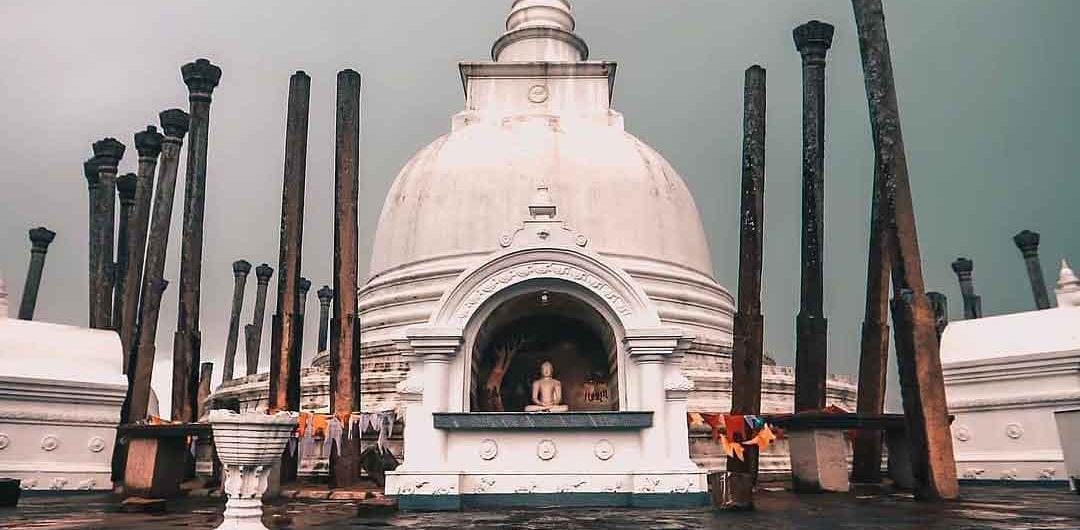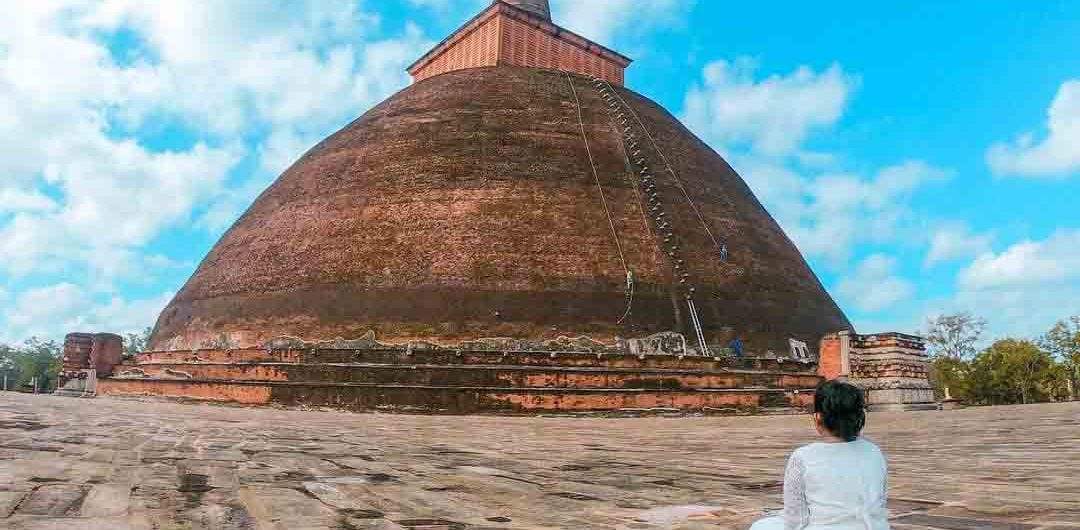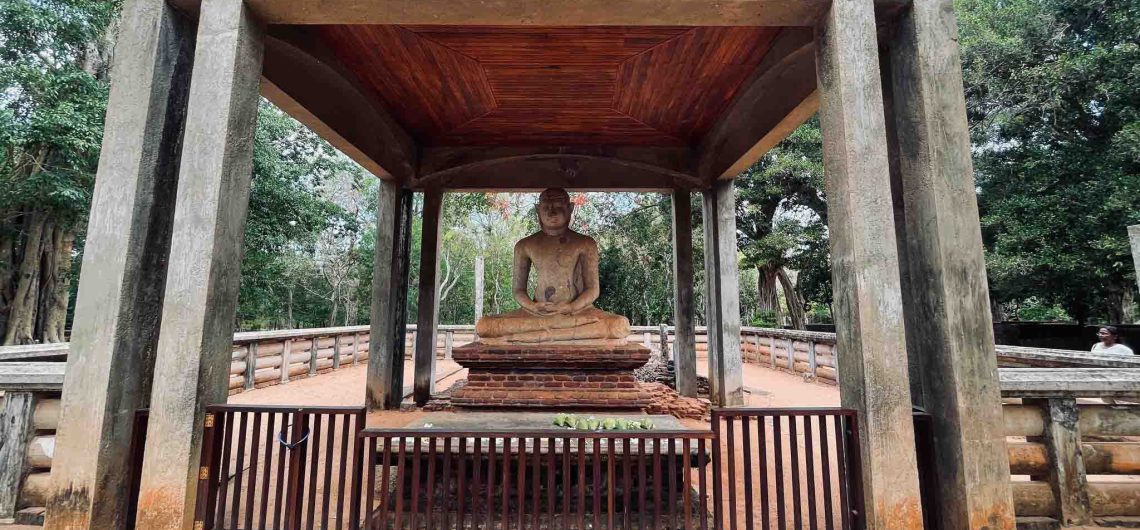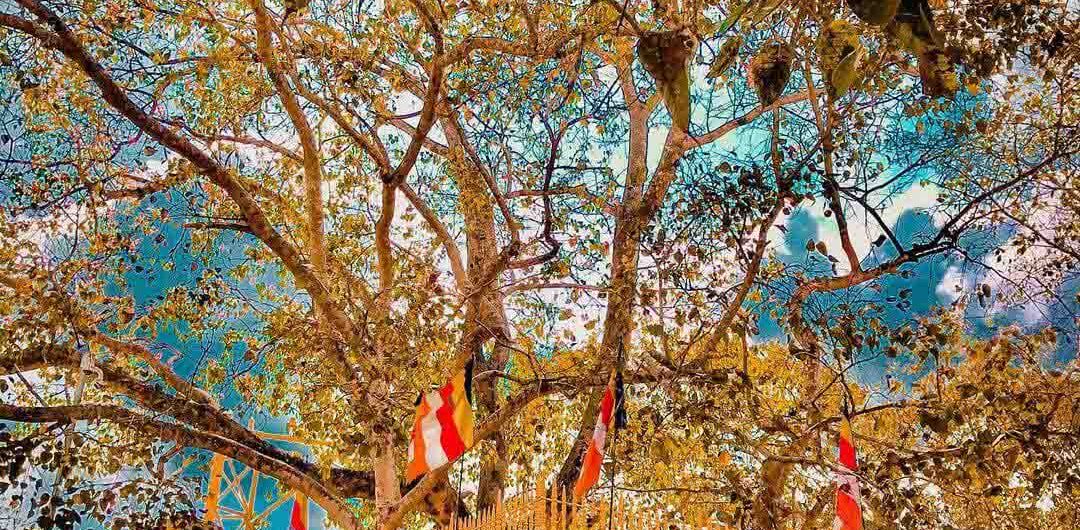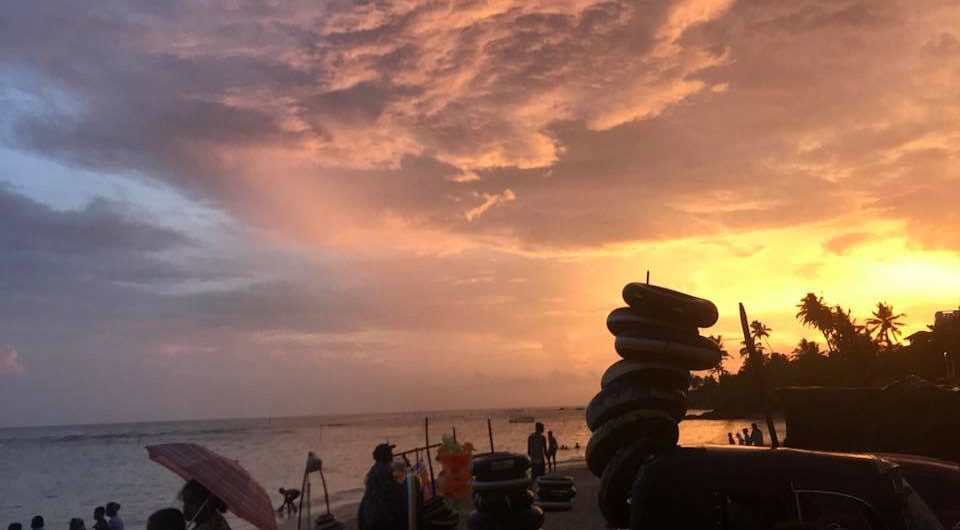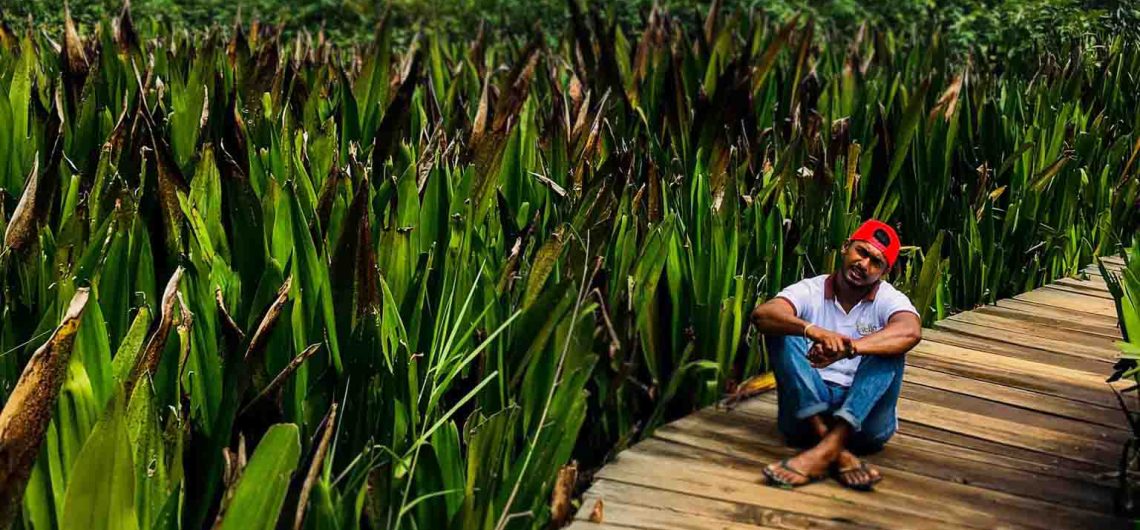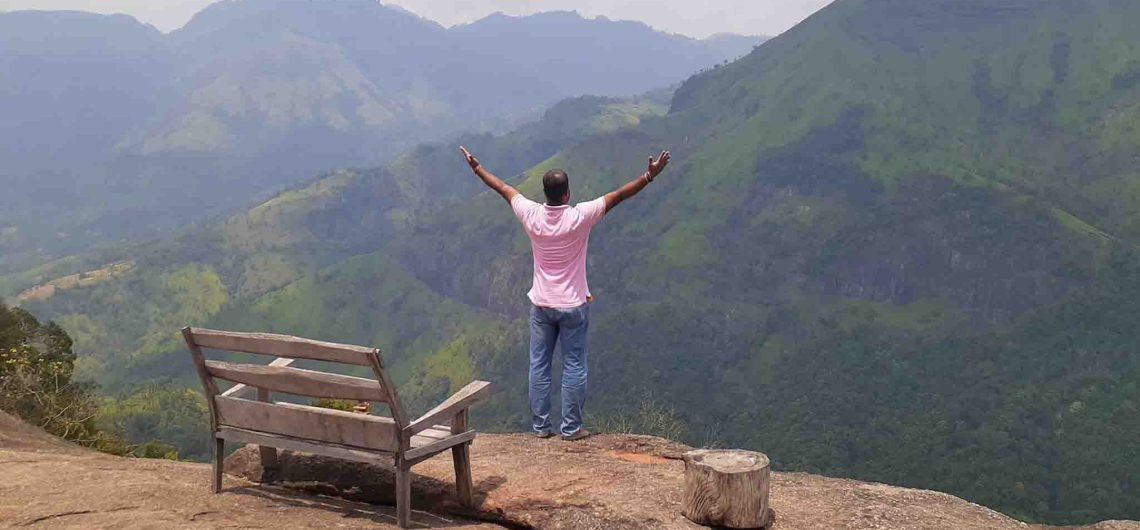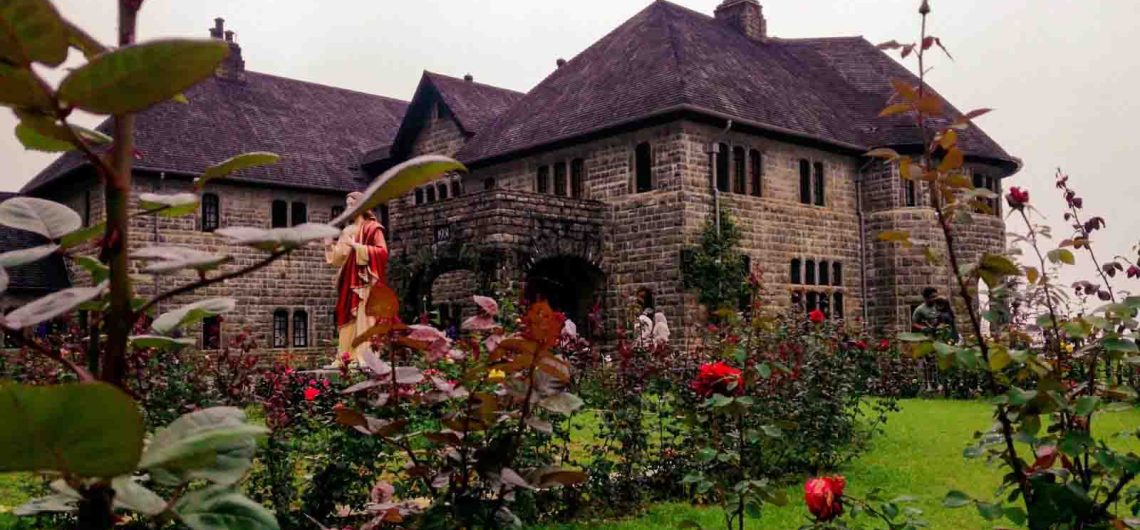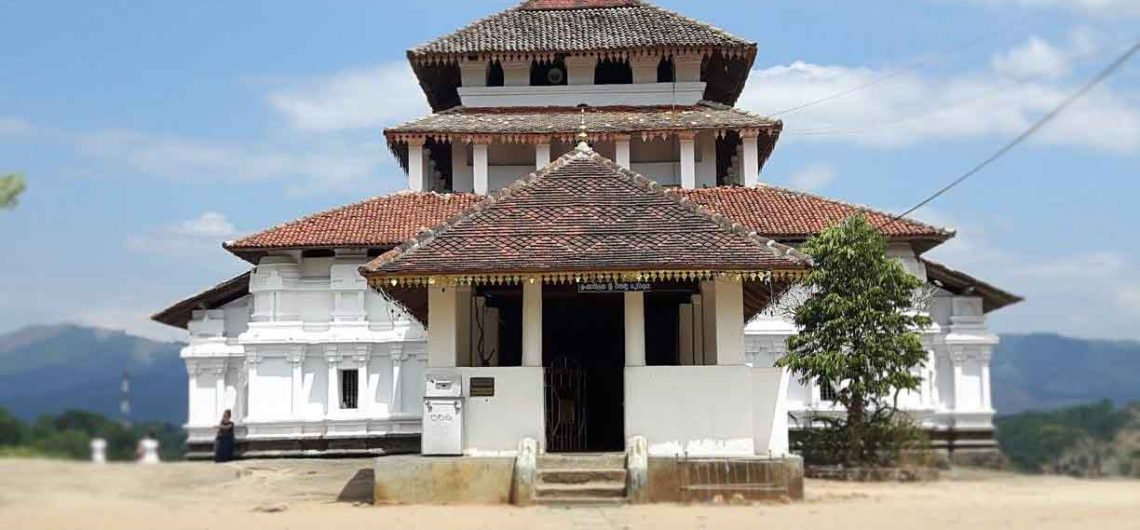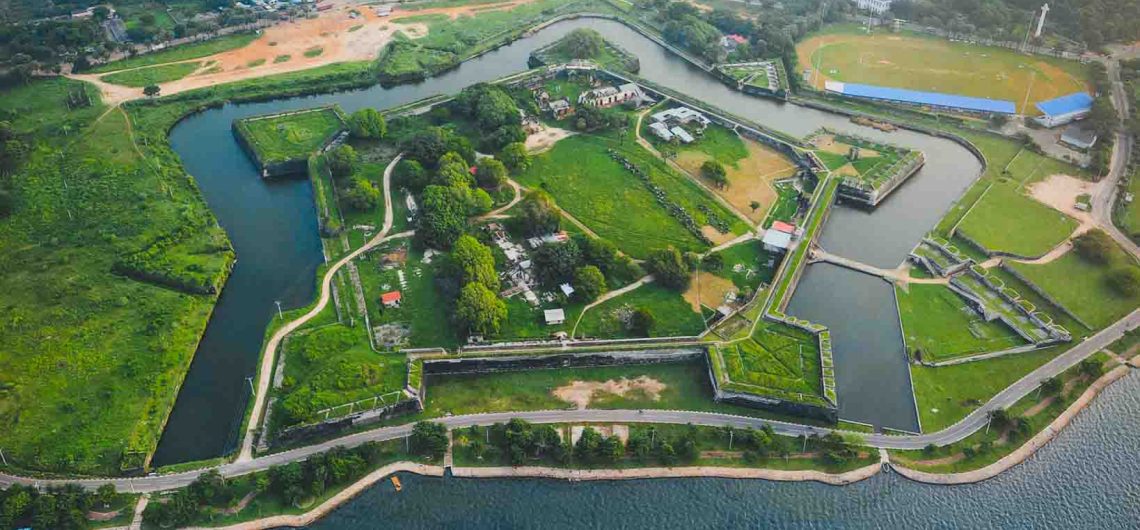In the ancient city of Anuradhapura, amidst the echoes of history, stands the serene and contemplative Samadhi Buddha Statue. This remarkable statue is not just a sculpted form; it is a embodiment of profound spiritual calm and a symbol of the rich Buddhist heritage that permeates the cultural tapestry of Sri Lanka. A Timeless Beacon of Tranquility: The Samadhi Buddha Statue, with its dignified posture and meditative countenance, holds a special place within the sacred precincts of Anuradhapura. Crafted in the 4th century BCE during the reign of King Devanampiya Tissa, this statue represents the quintessence of the Buddha's meditative state—Samadhi. The Artistic Splendor: Crafted from a single block of limestone, the Samadhi Buddha is a testament to the artistic prowess of ancient Sri Lankan sculptors. The precision and delicacy with which the statue is carved reflect the aesthetic sensibilities of the bygone era. The Buddha is depicted in the dhyana mudra, a gesture of deep meditation, with his hands resting in his lap, forming a perfect triangle. Symbolism of Samadhi: The term "Samadhi" itself refers to a state of deep concentration and mental absorption. The Samadhi Buddha, with closed eyes and a tranquil expression, embodies the profound stillness and inner peace attained through meditation. It serves as an inspiration for Buddhist practitioners on their own path toward enlightenment. Historical Significance: The Samadhi Buddha Statue holds a significant place in the history of Buddhism in Sri Lanka. It is believed to have been erected to mark the site where Arahat Mahinda, who brought Buddhism to the island, first met King Devanampiya Tissa. This meeting led to the conversion of the king to Buddhism and paved the way for the flourishing of the Buddhist faith in Sri Lanka. Meditation in Stone: As one stands before the
In the ancient city of Anuradhapura, amidst the echoes of history, stands the serene and contemplative Samadhi Buddha Statue. This remarkable statue is not just a sculpted form; it is a embodiment of profound spiritual calm and a symbol of the rich Buddhist heritage that permeates the cultural tapestry of Sri Lanka.
A Timeless Beacon of Tranquility:
The Samadhi Buddha Statue, with its dignified posture and meditative countenance, holds a special place within the sacred precincts of Anuradhapura. Crafted in the 4th century BCE during the reign of King Devanampiya Tissa, this statue represents the quintessence of the Buddha’s meditative state—Samadhi.
The Artistic Splendor:
Crafted from a single block of limestone, the Samadhi Buddha is a testament to the artistic prowess of ancient Sri Lankan sculptors. The precision and delicacy with which the statue is carved reflect the aesthetic sensibilities of the bygone era. The Buddha is depicted in the dhyana mudra, a gesture of deep meditation, with his hands resting in his lap, forming a perfect triangle.
Symbolism of Samadhi:
The term “Samadhi” itself refers to a state of deep concentration and mental absorption. The Samadhi Buddha, with closed eyes and a tranquil expression, embodies the profound stillness and inner peace attained through meditation. It serves as an inspiration for Buddhist practitioners on their own path toward enlightenment.
Historical Significance:
The Samadhi Buddha Statue holds a significant place in the history of Buddhism in Sri Lanka. It is believed to have been erected to mark the site where Arahat Mahinda, who brought Buddhism to the island, first met King Devanampiya Tissa. This meeting led to the conversion of the king to Buddhism and paved the way for the flourishing of the Buddhist faith in Sri Lanka.
Meditation in Stone:
As one stands before the Samadhi Buddha, there is a palpable sense of tranquility that permeates the air. The statue invites contemplation, urging visitors to reflect on the stillness within and the timeless teachings of the Buddha. The surroundings, with the gentle rustle of leaves and the distant murmur of pilgrims, contribute to the meditative atmosphere.
Visiting the Samadhi Buddha Statue:
For those planning a visit to this sacred site, it’s advisable to approach with respect and mindfulness. Modest attire is appreciated, and removing footwear before entering the precincts is customary. The serene ambiance encourages a contemplative stroll around the statue, allowing visitors to absorb the spiritual essence of the surroundings.
Beyond the Samadhi Buddha:
Anuradhapura, being an ancient capital of Sri Lanka, offers a plethora of historical and cultural wonders. Exploring the surrounding areas reveals the grandeur of ancient stupas, monastic complexes, and the remnants of a vibrant civilization. Sites such as Ruwanwelisaya, Jetavanaramaya, and Thuparamaya provide a comprehensive journey through the architectural and spiritual heritage of the region.
Preservation Efforts:
The Samadhi Buddha Statue, like many ancient relics in Anuradhapura, has been subject to preservation efforts to ensure its longevity. The custodianship of these historical sites is a shared responsibility, emphasizing the need for conservation to pass on this cultural wealth to future generations.
Cultural Festivals:
Anuradhapura comes alive during religious festivals, and the vicinity of the Samadhi Buddha is no exception. Full moon poya days and other Buddhist celebrations witness pilgrims and devotees offering prayers and engaging in rituals, creating an atmosphere charged with spiritual energy.
Conclusion:
The Samadhi Buddha Statue in Anuradhapura stands not just as a stone figure but as a living testament to the enduring legacy of Buddhism in Sri Lanka. It invites visitors to pause, reflect, and connect with the profound teachings of the Buddha. As the statue continues to silently witness the passage of time, it remains a timeless symbol of meditative calm, beckoning all who approach to find their own path to inner serenity and enlightenment. The journey to the Samadhi Buddha is more than a historical exploration; it is a spiritual pilgrimage into the heart of Buddhist wisdom and tranquility.
.
.
(Cover Image Credit: Enchanted Sri Lanka )

